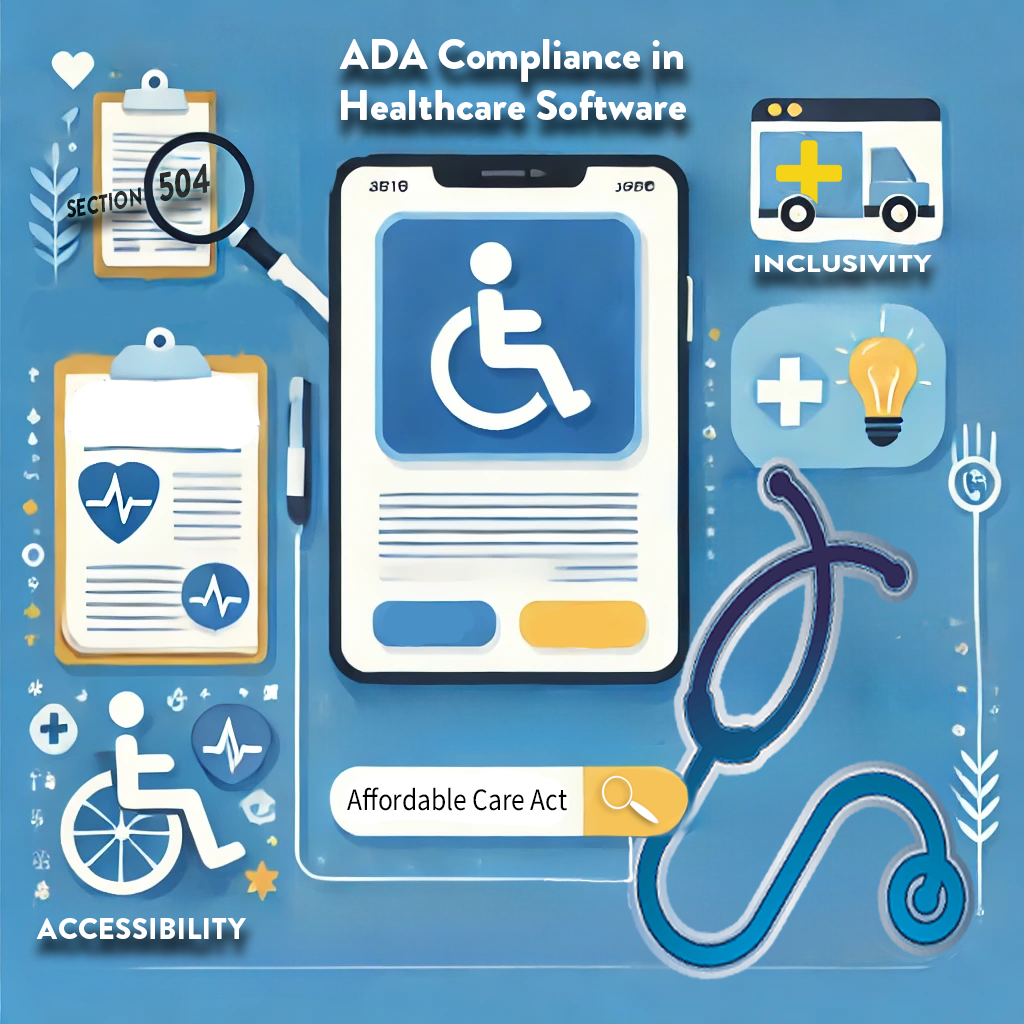The Americans with Disabilities Act (ADA) and related regulations play a crucial role in ensuring accessibility and non-discrimination in healthcare and technology. These laws are designed to provide individuals with disabilities equal access to healthcare, education, and government services. Among the most impactful regulations in healthcare are Section 504 of the Rehabilitation Act of 1973 and Section 1557 of the Patient Protection and Affordable Care Act (ACA). These provisions set specific standards for accessibility and non-discrimination, directly influencing how healthcare software and digital platforms are designed and implemented.

What is Section 504 of the Rehabilitation Act of 1973?
Section 504 is a civil rights law that prohibits discrimination based on disability in any program or activity that receives federal financial assistance. It ensures that individuals with disabilities have equal access to healthcare, education, employment, and government services.
What is Section 1557 of the Affordable Care Act?
Section 1557 is the non-discrimination provision of the ACA, which extends protections beyond just disability to include race, national origin, sex, and age in federally funded health programs. It mandates that healthcare providers, insurance companies, and federally assisted programs provide equal access to medical services without bias.
How These Laws Have Affected Healthcare Software Solutions
The implementation of Section 504 and Section 1557 has led to major advancements in healthcare technology, focusing on accessibility, inclusion, and user friendly digital experiences. Healthcare software developers must now integrate accessibility features to comply with these legal requirements.
-
Improved Digital Accessibility: Electronic health records (EHRs) and patient portals must be compatible with screen readers, keyboard navigation, and other assistive technologies to provide equal access for individuals with disabilities.
-
Bias-Free AI and Decision Support: Clinical decision support systems and artificial intelligence tools must be developed in a way that ensures fair treatment and unbiased recommendations for diverse patient populations.
-
Stronger Security and Privacy Controls: Ensuring confidentiality and accessibility in healthcare applications, allowing all patients to securely manage their health data.
-
Language Assistance in Digital Platforms: Many healthcare websites and apps now feature language translation services and interpreter integrations, ensuring compliance with Section 1557’s language access requirements.
-
Compliance-Driven Software Development: Healthcare technology companies are increasingly prioritizing ADA compliance in their design and development processes, ensuring their products meet regulatory standards from the outset.
By enforcing inclusivity and accessibility, these laws have reshaped how healthcare software solutions are designed. The focus has shifted toward creating digital tools that serve a broader range of patients, including those with disabilities and language barriers. As healthcare continues to advance, ensuring compliance with these regulations will be essential for creating effective, equitable, and legally sound software solutions.
At Code Scientists, we specialize in building accessible and compliant healthcare software that aligns with ADA regulations, Section 504, and Section 1557. Our team ensures that digital health solutions meet regulatory standards while providing an optimal user experience for all patients. Ping us to discuss how we can help you develop accessible and compliant healthcare software solutions.
